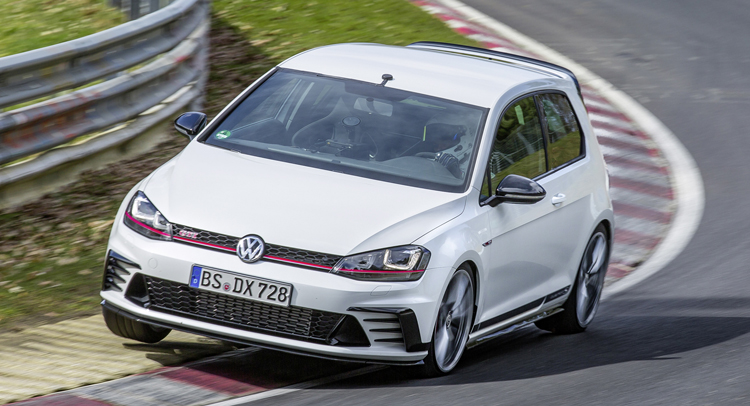In the 1970s Volkswagen made the first Golf GTI and Abarth was tuning Fiats and Autobianchis, a format that proved popular, offering an ideal combination of performance, price and practicality and often proving faster in real-world conditions than dedicated sports cars due to their ease of drivability.
The capabilities of the hot hatch have steadily improved over the decades, but they’ve taken a really huge step forward in the past few years. Whereas the original Golf GTI packed just 110 horsepower upon its debuted in 1975, the latest Golf R tops nearly 300, and a 400-horsepower version was recently proposed.
Impressive as that increase may seem, it only tells part of the story. Performance metrics like 0-60 times, top speeds, slalom and skidpad figures, and brake distances each tell a bit more. But to determine which hot hatches are really the best performers, you need to put them in the unencumbered environment of a common race track and let them loose to do what they do best.
You’ll likely have guessed by now that means the Nürburgring. Because while conditions on the infamous circuit can vary greatly from day to day, and even from one part of the track to another, there’s no single location where more automakers test their performance machinery. So based on the clocked times of the fastest front-drive vehicles ever to lap the Nordschleife, we’ve assembled the following list of the hottest hot hatches currently on the market.
Renault Mégane RS
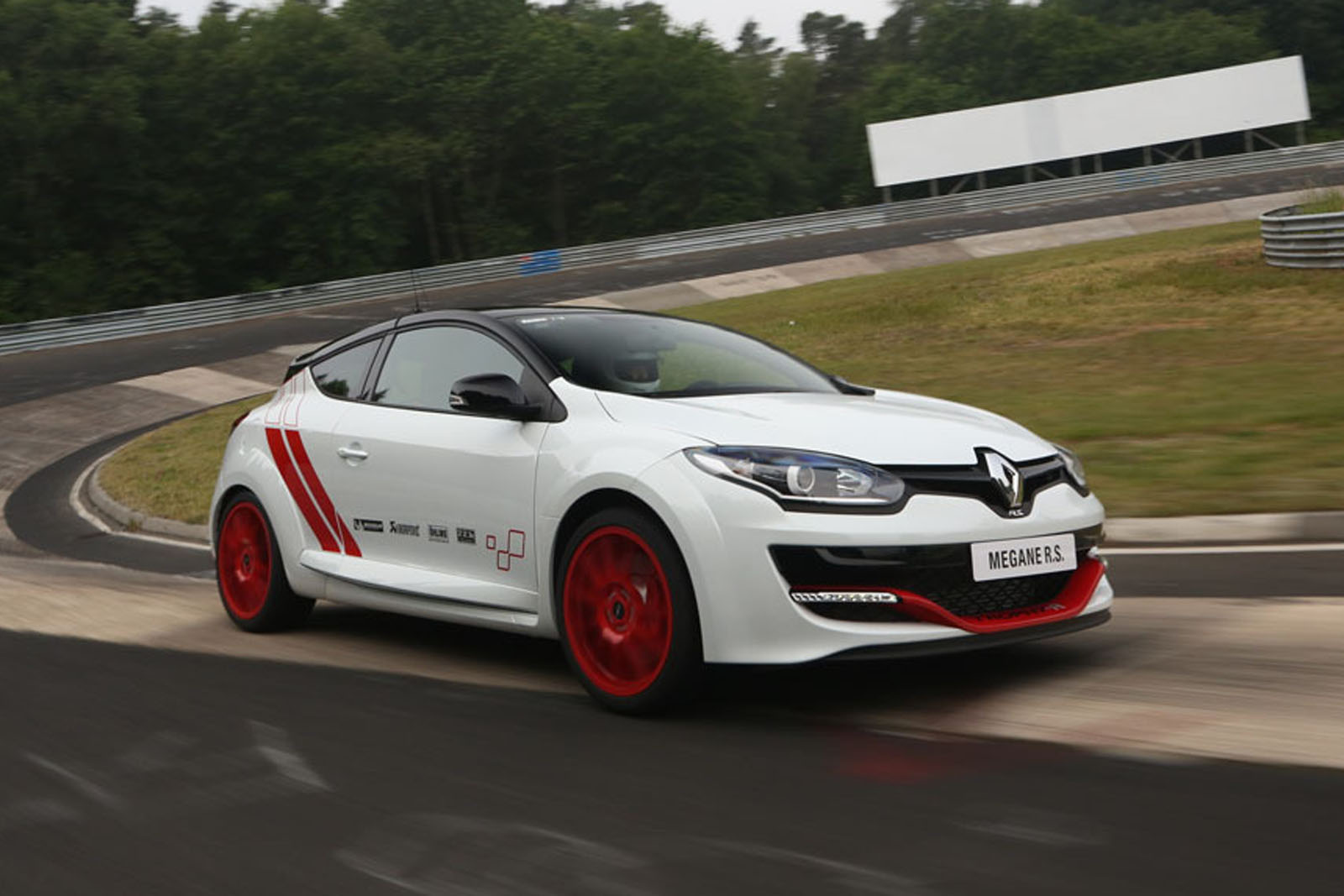
Renault Sport has established a well-earned reputation for itself producing some of the world’s finest hot hatches. The performance department has tuned Clios and Twingos, but its most potent machinery have come in the form of the Mégane – Renault’s C-segment challenger to the likes of the Volkswagen Golf and Ford Fiesta, both of which have also bread world-class hot-hatch variants of their own.
Though it was not the first front-driver to lap the Green Hell, it was arguably the R26.R version of the second-generation Mégane that first threw down the gauntlet as the king of the ‘Ring. Stripped down to the bare essentials, the R26.R set a front-drive lap record of 8 minutes, 16.9 seconds in June of 2008.
The French automaker then beat its own time three years later with the gen3-based Mégane Trophy with a time of 8:07.97, and when that time was beat, it returned with the more hardcore Mégane 275 Trophy-R, setting an even faster time of 7:54.36 in June 2014. Renault has since introduced a new fourth-generation Mégane, and we’re looking forward to seeing what Renault Sport will be able to extract from it.
Seat Leon Cupra
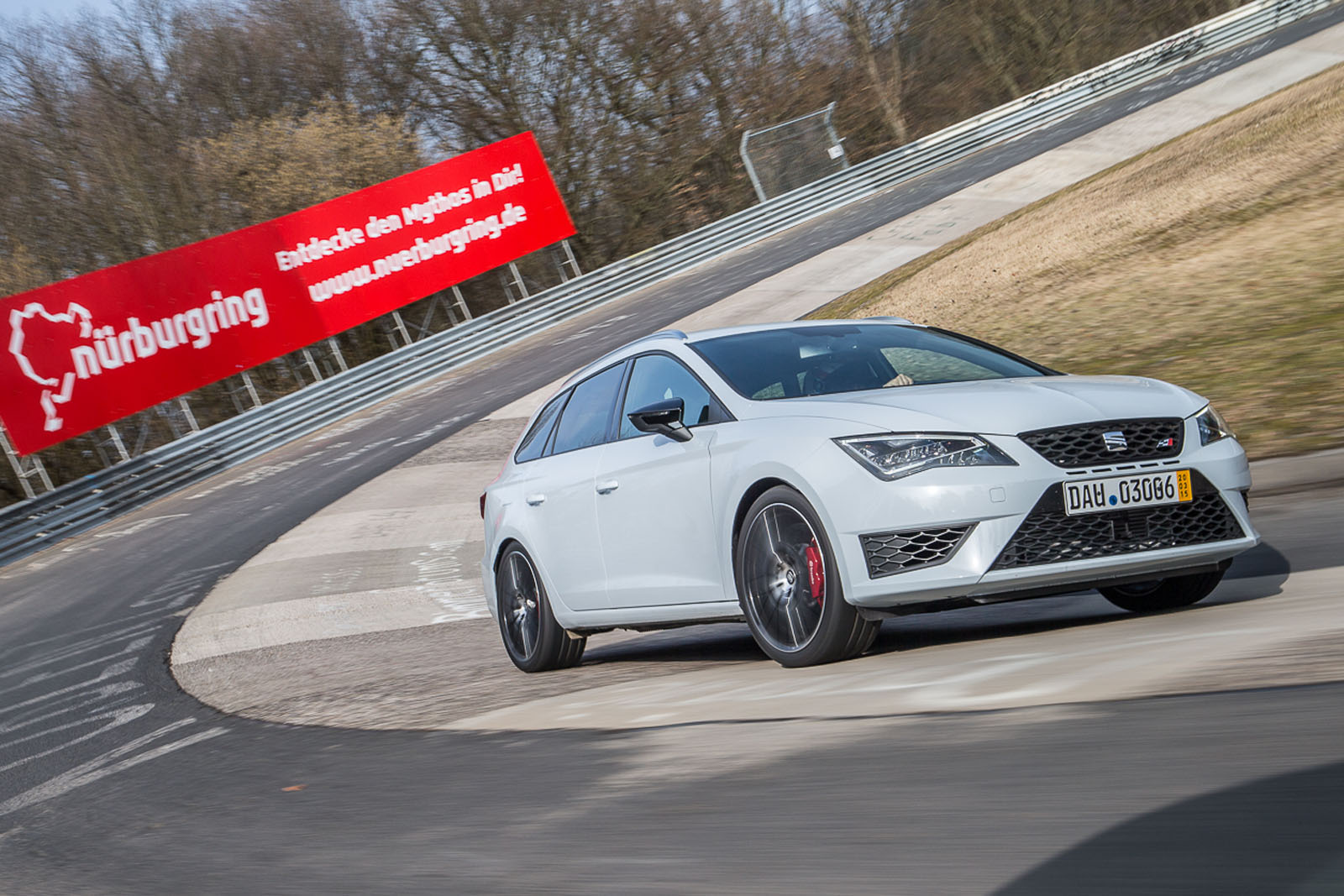
That car that beat Renault Sport at its own game? That was the Seat Leon Cupra. The Spanish hot hatch shares much in common with the Volkswagen Golf GTI, but offers a bigger bang for your buck, and a bit more Latin flair.
It was also the first front-drive car to break the eight-minute mark on the Nordschleife. Seat set its time at 7:58.4 in March 2014, knocking the Mégane Trophy off its perch – only for the Trophy-R to reclaim the prize for France… by just four seconds.
As if that weren’t enough, Seat returned to the ‘Ring a little over a year later with the longer Leon ST Cupra and set a slightly faster time at 7:58 even. That was enough to claim the record for the fastest wagon ever to hustle its way around the Nordschleife.
Honda Civic Type R
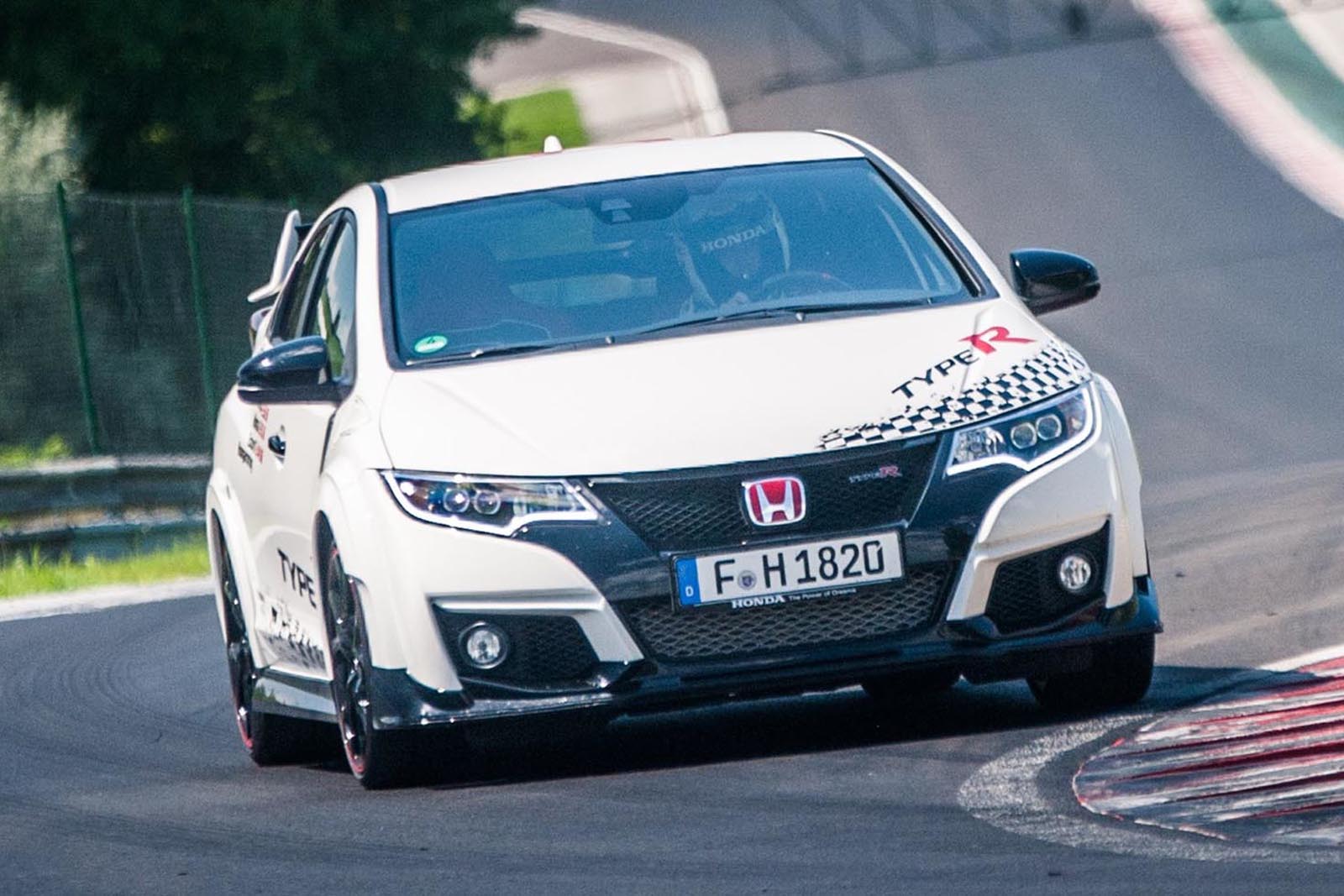
Honda stated right from the get-go that its goal for its new Civic Type R would be to set the fastest front-drive lap time at the Nürburgring. And that’s just what it did.
While undergoing development, the revived legend lapped the Nordschleife in just 7:50.63, pipping Renault’s Trophy-R by less than four seconds. But here’s the thing: while Honda didn’t announce its lap time until March of 2015, the time was actually recorded the previous May. Which means that the ultimate Renault was never actually the fastest, and the Seat only was for about two months. We just didn’t know it at the time.
Of course the relentless pace of progress meant that Honda wouldn’t hold on to its record forever, either. And once it was defeated, the Japanese automaker opted not to try again, but rather to set lap records at five other European circuits. With a new Type R in the pipeline to be based on the latest Civic, we’re looking forward to seeing what Honda’s next hot hatch will do when it’s ready.
Volkswagen Golf GTI
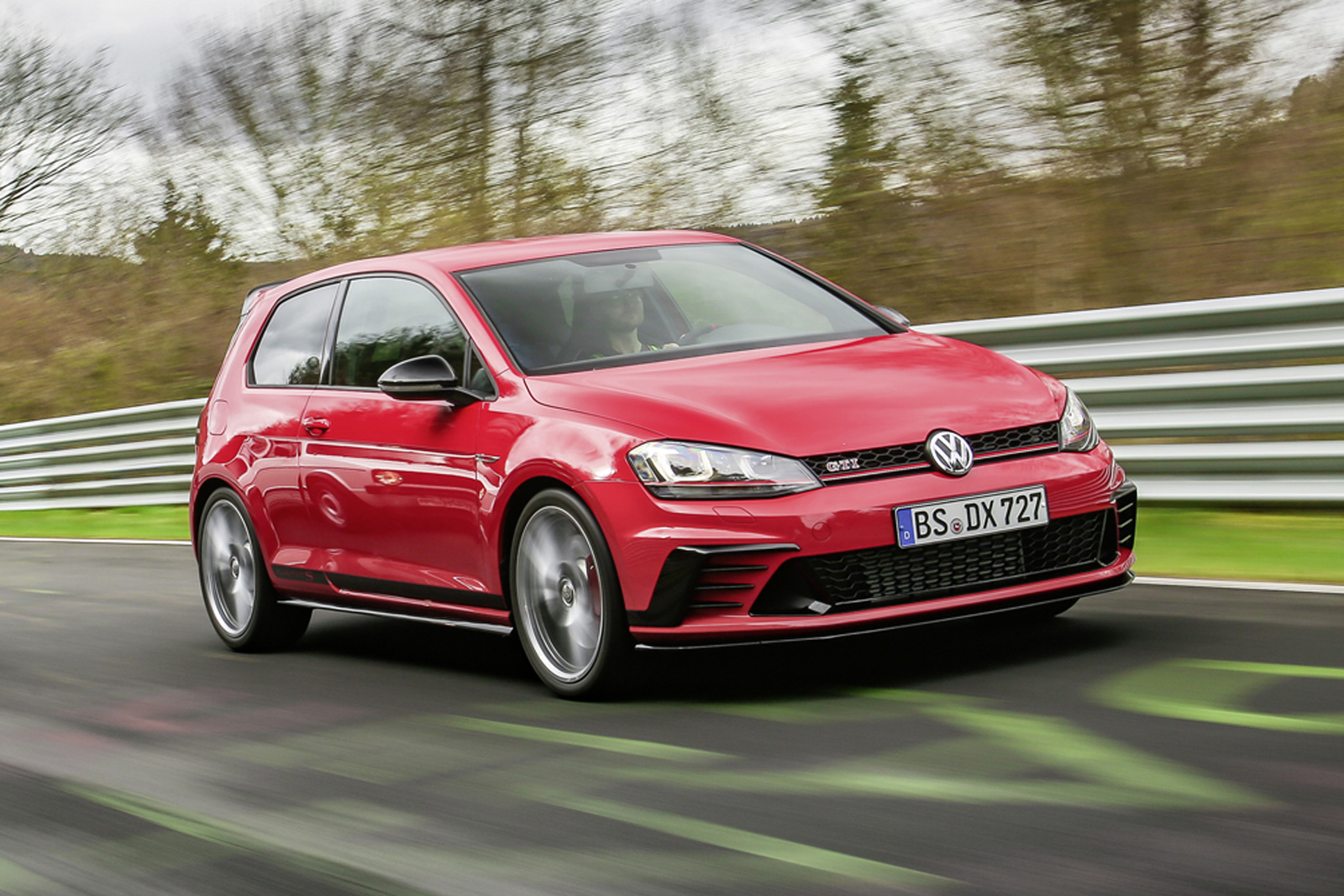
Forever the very icon of the hot hatch, the GTI is still the king. But don’t take our word for it; there’s empirical evidence to back it up. Just this past April, Volkswagen released the ultimate GTI to date – the Clubsport S – revealing that it set a Nürburgring lap time of 7:49.21. That’s just over a second quicker than the Honda, but enough to take the crown.
Now you may be thinking that the GTI isn’t even the most potent version of the Golf, and you would be right… sorta. The standard GTI packs 210 horsepower, the Clubsport is rated at 261, and the Golf R at 296. But the Clubsport S ups the ante to 306 horses. That’s the same output as the Civic Type R, and more than the Golf R… plus the Clubsport S weighs less at under 3,000 pounds. Shame VW only made 400 of them, and not a single one for American consumption.
Honorable Mentions for Driven Wheels
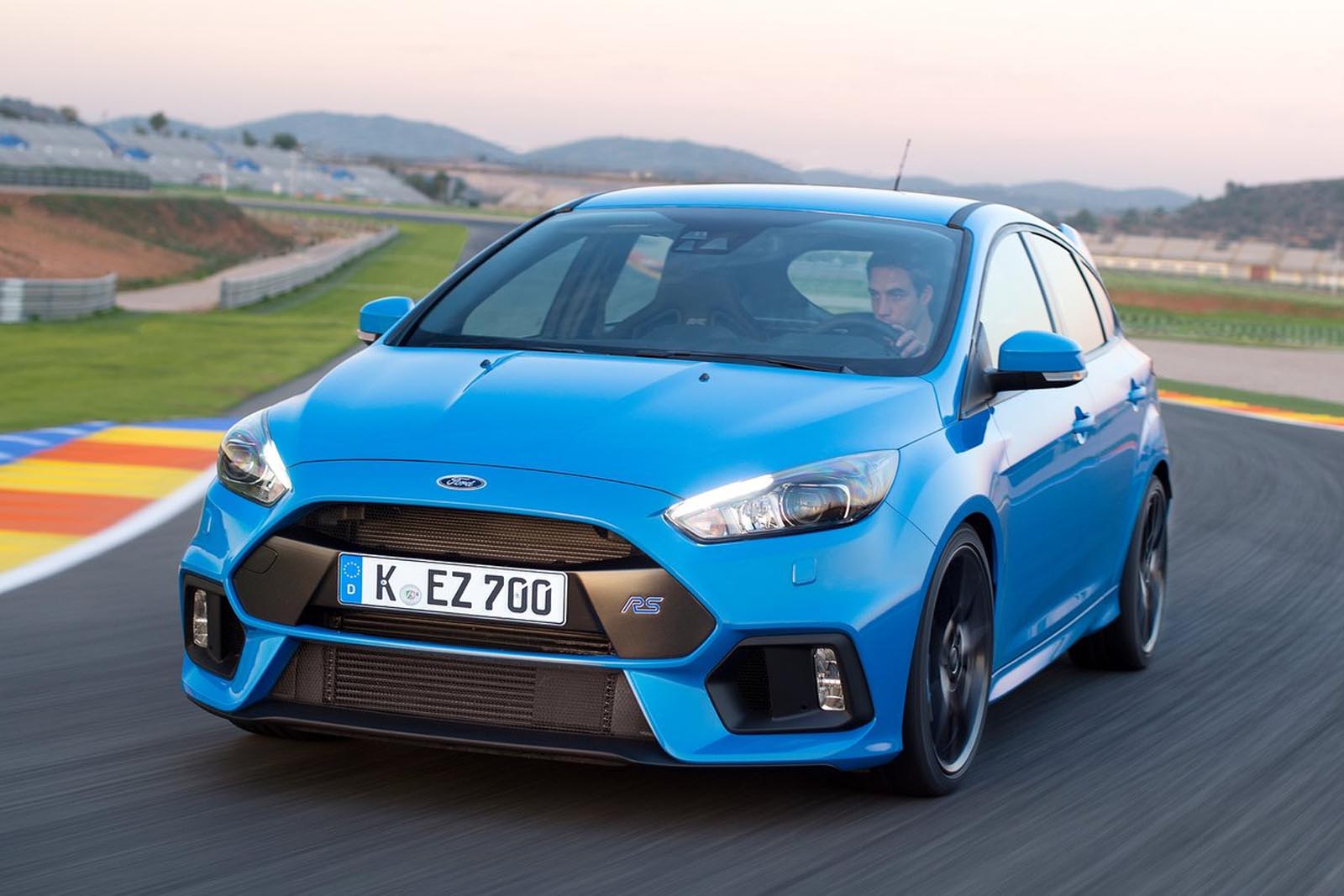
What about the all those all-wheel-drive hot hatches, you ask? There are some awesome ones out there, capable of very serious performance, like the Ford Focus RS and Volkswagen Golf R… but also the Mercedes-AMG A45 and Audi RS3.
Their emergence raises a number of questions. Is the Mercedes-AMG CLA45 any less compelling than the A45 because it has a trunk instead of a tailgate? Will the next RS3? What about the Subaru WRX STI, which in its current iteration is only sold as a sedan? Is the BMW M2 coupe less impressive than the old M135i hatchback, which was rear-drive? What about the Ferrari GTC4Lusso – does that qualify as a hot hatch?
As devastatingly fast and powerful as those performance machines may be, we had to draw the line somewhere. And that line was at the end of the Nordschleife – with the driven wheels up front and a tailgate at the back.







